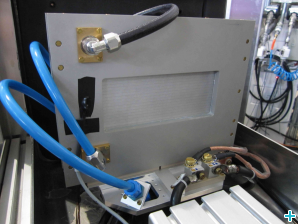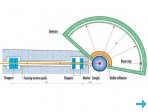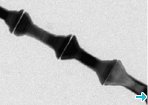New type of radiofrequency spin flippers for Neutron Resonance Spin Echo
The Advanced Methods and Techniques JRA has developed a new type of RFSF to enhance NRSE spectrometers.
NMI3, 09/07/2015
Neutron Spin Echo is a well-known scattering technique to explore structural and magnetic dynamics in soft and condensed matter with sub-μeV energy resolution. Radiofrequency spin flippers (RFSF) are key elements of Neutron Resonance Spin Echo (NRSE) spectrometers. Thanks to them scientists can perform controlled manipulations of the beam polarization. A group of scientists who work as part of the NMI3 Joint Research Activity on Advanced methods and techniques has designed and tested a new type of RFSF using an original manufacturing technique for the static coil.
The procedure to build the flippers is largely automated, which ensures it is reproducible and achieves an excellent homogeneity of the neutron magnetic resonance condition over the coil volume. Two salient features of this concept are the large neutron window and the closure of the coil by a μ-metal yoke, which prevents field leakage outside of the coil volume. These properties are essential for working with large beams and enable new applications with coils tilted with respect to the beam axis such as neutron Larmor diffraction or the study of dispersive excitations by inelastic NRSE.
The RFSF was developed for the NRSE instrument RESEDA at the Maier-Leibnitz Zentrum in Germany. They are well suited to upgrade existing cold neutron based NRSE spectrometers or to build new versatile instruments, as it is the case of the future European Spallation Source.
For further details please refer to the original publication.
Original Publication
N. Martin, J. N. Wagner, M. Dogu, C. Fuchs, L. Kredler, P. Böni and W. Häußler (2014) Neutron resonance spin flippers: Static coils manufactured by electrical discharge machining, Rev. Sci. Instrum. 85, 073902; http://dx.doi.org/10.1063/1.4886383

This work is supported by NMI3 through the Advanced methods and techniques JRA.
NMI3 Highlights
How to optimise multi-channel neutron focusing guides for extreme sample environments?
NMI3 collaboration works on simulations to find the best possible guide for experiments at low temperatures and high magnetic fields. Read more .
How to probe tiny samples? Insights into the production of micron-sized cold neutron beams
The NMI3 Imaging JRA discusses how to produce smaller beams. They conclude that reflective optics offers the most versatile way to produce them. Read more .
Neutrons show that 260 million years ago the Pristerodon could already hear airborne sound
Neutron tomography experiments revealed that some forerunners of mammals were already able to hear airborne sound thanks to an eardrum at the lower jaw, an impedance matching middle ear and a small cochlea. Read more .




